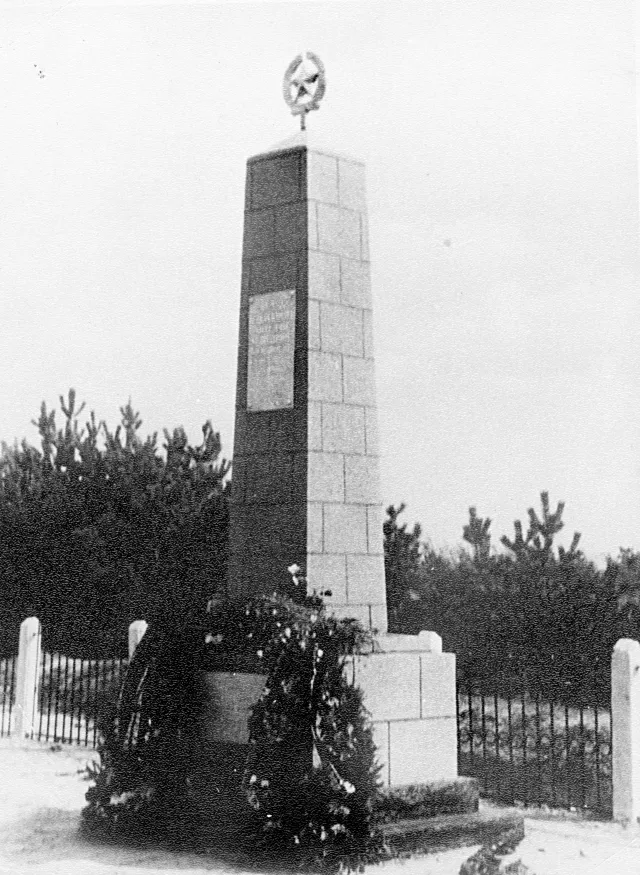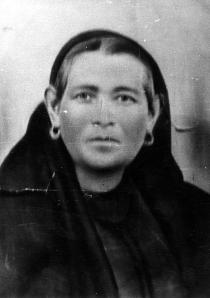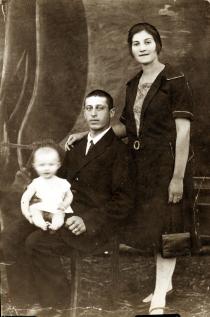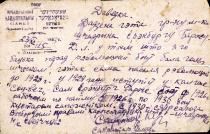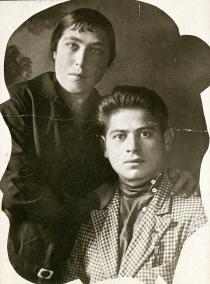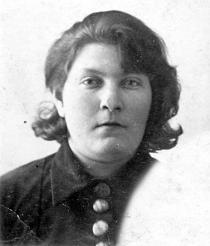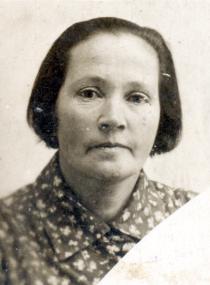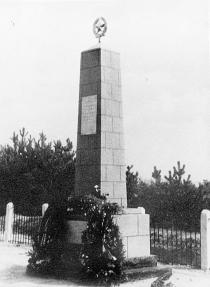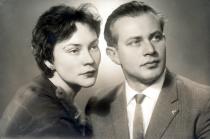Monument at mass burial site of Jews of Shzedrin
This is the monument on the mass grave of the Jews of Shzedrin.
On March 8, 1942, the Germans took the inhabitants of the ghetto to the cemetery. They made the people get into ditches that had been dug earlier, then they shot them and covered them with earth.
My relatives are buried here: my father's sister and her three children; my mother's sister and her three children; and my mother's brother with his two sons.
A former Shzedrin resident was the commander of the military unit that liberated the town. He installed a memorial board with an inscription on the mass grave. A temporary monument was then put up.
Only in 1963, with funds collected by the Jews, the obelisk was erected and the common grave was fenced.
The inscription, in Russian and Yiddish, says:
"Eternal memory to the inhabitants of Shzedrin, executed by fascist murderers in the war of 1941-1945." Each year, on the day of liberation of Byelorussia, the former Shzedrin residents and their offspring come to the grave.
There are no Jews living in Shzedrin now. The Jewish agricultural colony of Shzedrin existed exactly 100 years - from 1842 to 1942.
My paternal great-grandfather used to make brooms of twigs for people in Shzedrin. In 1929, my paternal grandfather, David Leib Erenburg, joined the collective farm "Sotsveg" (Socialistic Way), one of the first Jewish collective farms in the country, which was organized in Shzedrin.
The farm was rich; there were fields, gardens, a goose farm, a canned-food plant and a dairy factory.
My father, Boris Davidovich Erenburg, was born in Shzedrin in 1907. The family was was religious, but poor. He became a shoemaker's apprentice. At the age of 16, he started to work on his own.
As there was not much work in Shzedrin, he worked in the adjacent villages. He came to a village, collected orders, lived with one family, then with another where he worked.
Those were Belorussian families, but meals were cooked for him separately, because he ate only kosher food.
My mother, Rachel Herzevna Erenburg, was also born in Shzedrin in 1907. She graduated from a Jewish elementary school. In her youth, she helped her widowed mother around the house and in the vegetable garden.
She worked for the rich Jews, as a day laborer and in a candy factory. She was joyful, sang well and acted in an amateur theater.
My parents married in 1926. I was born in Shzedrin in 1927, the eldest of four children. We moved to Bobruisk, where Father had a job in a plywood manufacturing plant.
